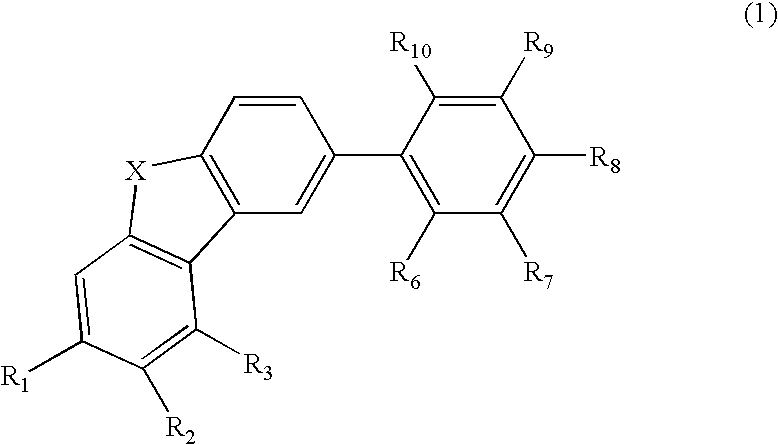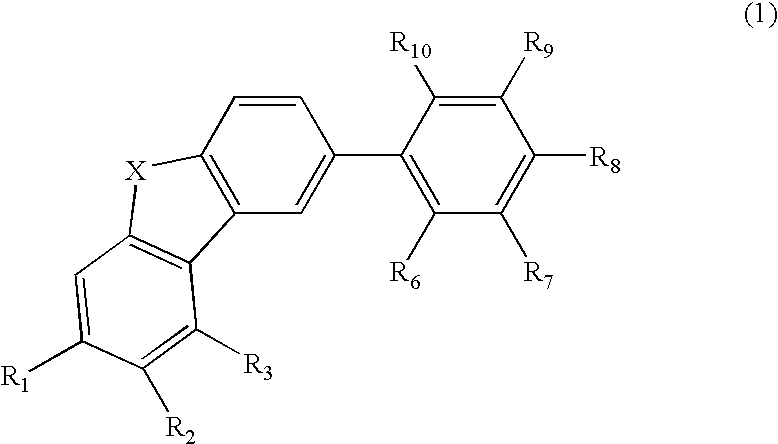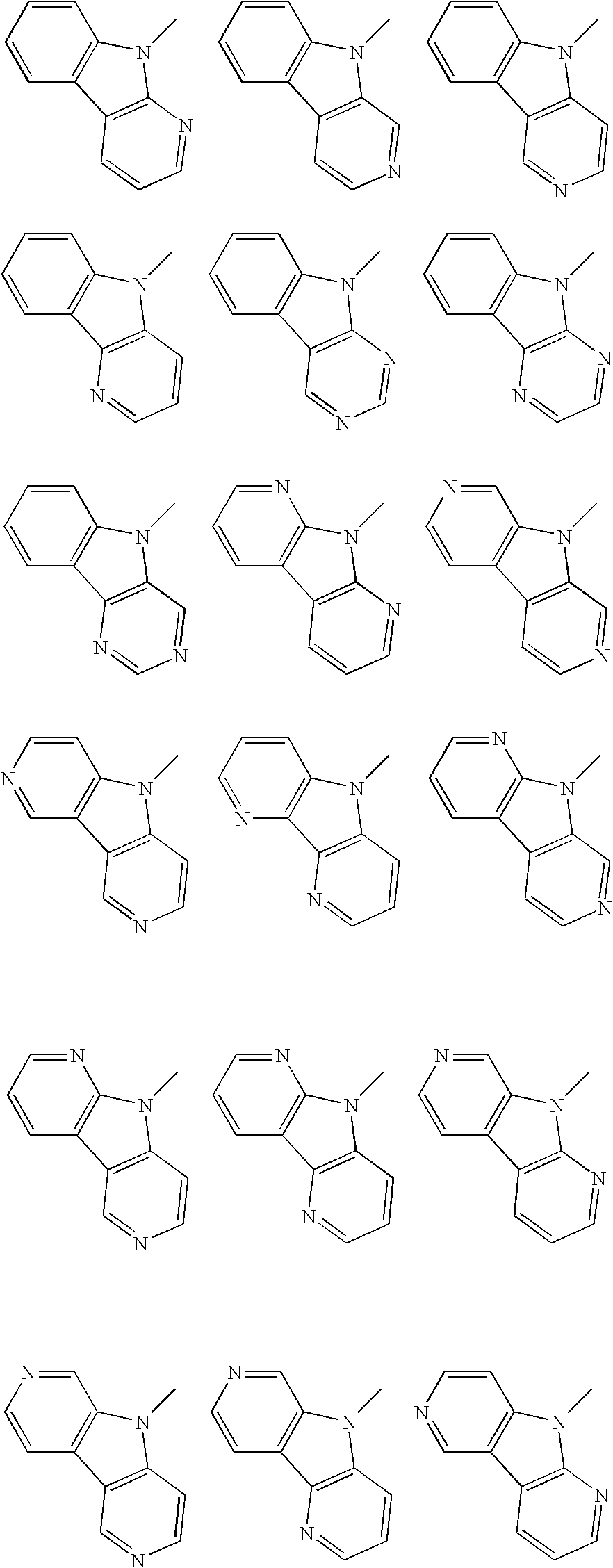Material for organic electroluminescence device and organic electroluminescence device utilizing the same
- Summary
- Abstract
- Description
- Claims
- Application Information
AI Technical Summary
Benefits of technology
Problems solved by technology
Method used
Image
Examples
synthesis example 1
Synthesis of Compound No. 4
[0134](1) Synthesis of 2,8-dibromodibenzofuran
[0135]A three-necked flask was charged with dibenzofuran (100.91 g, 600 mmol) and 300 ml of AcOH and the contents were heated to 40° C. Then, a solution of Br2 (191.8 g, 1200 mmol) / AcOH 300 ml was added dropwise. After stirring for 9 h at 40° C., the mixture was refluxed for 6 h. After the reaction, the reaction production solution was cooled to room temperature and added with 600 ml of water. The precipitate collected by filtration was dissolved in toluene. The resultant solution was dried over anhydrous magnesium sulfate, filtrated and concentrated. The obtained solid product was recrystallized from hexane five times to obtain the titled compound (62.83 g, 32% yield).
FD Mass Spectroscopy Analysis
[0136]C12H6Br2O: calculated 325.6, found 326
(2) Synthesis of 2-bromo-8-carbazolyldibenzofuran
[0137]A three-necked flask was charged with 2,8-dibromodibenzofuran (39.12 g, 120 mmol), carbazole (20.07 g, 120 mmol), K3P...
synthesis example 2
Synthesis of Compound No. 9
[0142]
[0143]A three-necked flask was charged with compound 2a (6.3 mmol, 2.85 g), compound 1b (6 mmol, 2.47 g), Na2CO3 2M aq. (6 ml), Pd[PPh3]4 (0.3 mmol, 0.35 g), DME (12 ml), and toluene (6 ml), and the mixture was refluxed for 9 h. After the reaction, the reaction product solution was cooled to room temperature and extracted with CH2Cl2 using a separatory funnel. The extract was dried over anhydrous magnesium sulfate, filtrated and concentrated. The obtained solid product was purified by a column chromatography (hexane:toluene=6:4). The purified product was further washed with ethanol and vacuum-dried to obtain a white solid. The above operations were all performed in an argon atmosphere (2.12 g, 48% yield).
FD Mass Spectroscopy Analysis
[0144]C54H33N3O: calculated 739.9, found 739
synthesis example 3
Synthesis of Compound No. 10
[0145]
[0146]A three-necked flask was charged with compound 3a (7.35 mmol, 2.12 g), compound 1b (7 mmol, 2.89 g), Na2CO3 2M aq. (7 ml), Pd[PPh3]4 (0.35 mmol, 0.40 g), DME (14 ml), and toluene (7 ml), and the mixture was refluxed for 9 h. After the reaction, the reaction product solution was cooled to room temperature and extracted with CH2Cl2 using a separatory funnel. The extract was dried over anhydrous magnesium sulfate, filtrated and concentrated. The obtained solid product was purified by a column chromatography (hexane:toluene=6:4). The purified product was further washed with ethanol and vacuum-dried to obtain a white solid. The above operations were all performed in an argon atmosphere (2.55 g, 63% yield).
FD Mass Spectroscopy Analysis
[0147]C42H25NO2: calculated 575.7, found 575
PUM
| Property | Measurement | Unit |
|---|---|---|
| Wavelength | aaaaa | aaaaa |
| Energy gap | aaaaa | aaaaa |
| Fraction | aaaaa | aaaaa |
Abstract
Description
Claims
Application Information
 Login to View More
Login to View More - R&D
- Intellectual Property
- Life Sciences
- Materials
- Tech Scout
- Unparalleled Data Quality
- Higher Quality Content
- 60% Fewer Hallucinations
Browse by: Latest US Patents, China's latest patents, Technical Efficacy Thesaurus, Application Domain, Technology Topic, Popular Technical Reports.
© 2025 PatSnap. All rights reserved.Legal|Privacy policy|Modern Slavery Act Transparency Statement|Sitemap|About US| Contact US: help@patsnap.com



